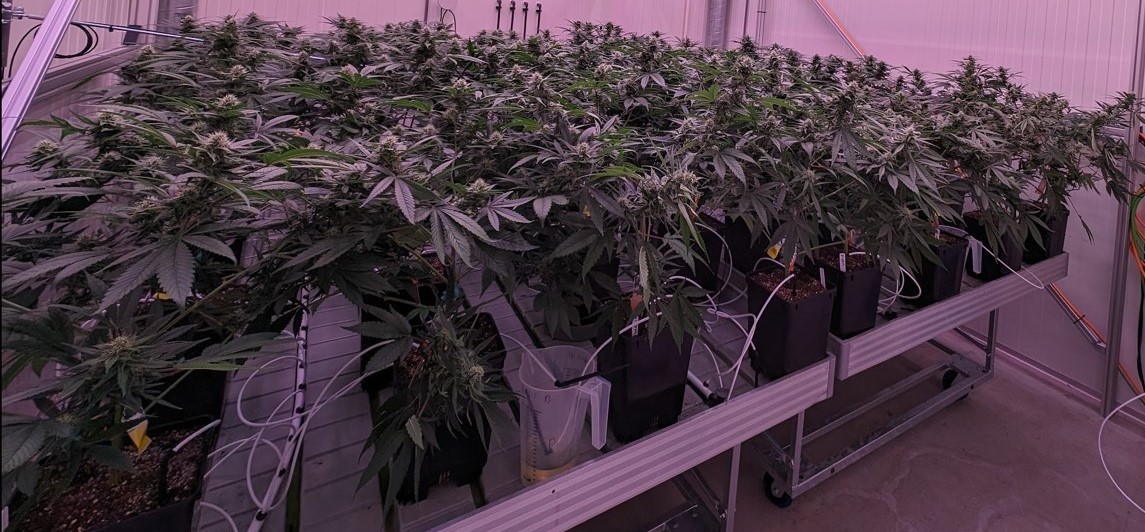To stay a step ahead of the ongoing trend of professionalization in the medicinal crops industry, licensed cannabis producers need to optimize their efficiency. The aim is simple: to produce more flowers (kg/m2) per year with fewer resources, without compromising on quality. By adjusting their approach in the vegetative phase, many of today’s cannabis growers can increase their annual yield per square meter by as much as 30%, while also reducing their inputs. Moreover, implementing this strategy also boosts quality and uniformity, promotes sustainability, and reduces operational risks.
Up to 6 crop cycles per year
“The aim is simple: to produce more flowers with the same or fewer inputs. To achieve this, it can help to think about the annual yield per square meter instead of the annual yield per plant. By accelerating the crop cycle, you can increase your total production without physically expanding your growth facility,” says Rene Corsten, crop consultant at Delphy, and a member of the Medical Cannabis Platform for Innovation and Research (MCPIR), a unique consortium of 13 companies with complementary expertise within the medicinal cannabis sector.
Corsten explains how this accelerated approach works: “Typically, a cannabis growing cycle involves a vegetative phase usually lasting 2 to 4 weeks. We know it is possible for growers to shorten that phase to a maximum of just 4 to 6 days – which reduces the total crop cycle by up to 3 weeks. As a result, rather than 4 crop cycles of 12-13 weeks per year, a grower could complete almost 6 crop cycles of around 9 weeks.”
Higher plant density
“Needless to say, to achieve the same amount of flowers at the end of each cycle, it’s necessary to densely pack the grow space with significantly more than the modern standard of 2 to 6 plants per square meter. However, densities of 30 to 40 plants per square meter were not uncommon among legacy growers in the past,” says the crop consultant. “It is important to select the right phenotype, of course. The cultivar should have apical dominance to ensure that the plants grow upwards rather than outwards.”
Less labor, better quality, smaller footprint
Besides accelerating the crop cycle, a high-density approach has several other advantages according to Corsten: “The combination of a shorter cycle and apical dominance significantly reduces the need for plant management such as pinching, de-leafing and shoot selection. This saves time and therefore reduces the labor costs per kilo of flowers. The shorter growth cycle also reduces the risk of pest and disease outbreaks in the crop.”
“Additionally, a shorter cycle is better from a uniformity perspective, because the risk of product degradation and the pest and disease pressure increase over time. And uniformity is essential if growers are to be able to automate and mechanize their operations on the path towards scaling up,” continues Corsten. “Last but not least, an accelerated vegetative phase means that a shorter lit period is necessary. This creates energy savings up to 40%, resulting in a positive impact on the company’s carbon footprint as well as on its profitability.”
Tailored approach to safeguard future competitiveness
The cannabis sector is less standardized than other crops such as tomatoes or ornamental flowers, he acknowledges. “Every grower works with a unique system, and some systems are more suitable for this approach than others. Therefore, crafting a tailored approach for your facility is essential, and it demands careful planning and strategic implementation. But when done correctly, this short-cycle, high-density approach could help many licensed cannabis growers to considerably increase their annual yield per square meter, paving the way for them to scale up and safeguarding their future competitiveness.”
The team at MCPIR see plenty of opportunities for working together, leveraging knowledge and experience in other high-tech crops to propel this crop sector to new heights of success. “As part of our mission to develop a blueprint for optimal cannabis production, we will soon start testing this accelerated crop cycle approach in practice to see exactly how far we can push the boundaries,” Corsten concludes.
In short, benefits of a short-cycle, high-density approach
- Increased production by 25-30%: With a shorter growing cycle, growers can complete more crop cycles per year, leading to higher overall production.
- Enhanced product quality: The risk of product degradation increases over time, so shorter cycles should result in better-quality products.
- Significant reduction in labor costs: Thanks to the elimination of plant management tasks, such as pinching and de-leafing, considerably less labor is needed.
- Lower energy costs and smaller environmental footprint: Shortening the light-intensive vegetative stage to less than a week reduces the overall energy input needed for artificial lighting. As an added bonus, achieving higher yields with the same energy input reduces the company’s carbon footprint.
- More uniform product: Shorter cycles promote more uniform growth, facilitating automation and robotization in the cultivation process.
- Reduced risk of pests and diseases: Shorter cycles inherently carry less risk of pest and disease outbreaks. This risk is further lowered due to less worker contact with the plants resulting from the reduced need for plant management.
To learn more about speeding up the cycle or discuss any other aspect of licensed cannabis cultivation, contact Jaime Ahumada Espinoza, Project Manager Research at MCPIR: info@mcpir.nl.


